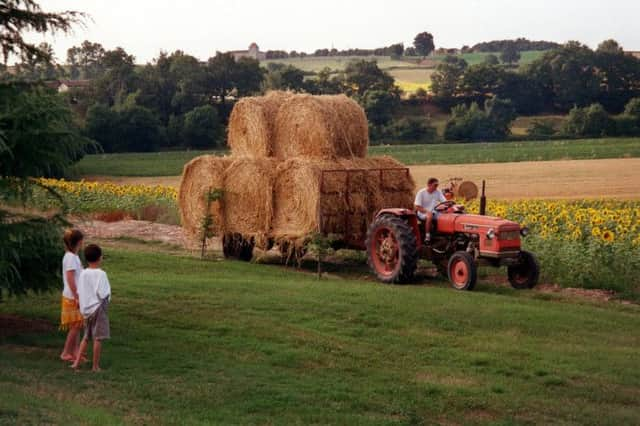Farming: String theory of tangled rope can just get knotted


Meantime, as a break from politics, ram sales, lamb sales, cattle sales and the final throes of harvest I thought we might consider one of farming’s – and life’s – perennial mysteries. Namely, how a neatly coiled rope, cable, length of string, headphones, phone charger cable or, come to that, a piece of knitting can within seconds, in the wrong hands, become a tangled disaster.
I note “wrong hands” because disaster does not happen to everyone. My brother Angus, for instance, can coil and uncoil ropes dexterously and without tangles for any given purpose, from restraining an animal to securing a load on a trailer. He can also lay out an electric cable of any length in a straight line and tie complicated knots without apparently having to concentrate as he does so. After use he can reel them in and coil them neatly without a quiver.
Advertisement
Hide AdAdvertisement
Hide AdI watch and envy because reverse every one of the above statements and that’s me trying to tie, secure or lay out a length of rope, wire or cable while concentrating until my eyes cross. And the damn things still turn into an unruly mess.
There is no obvious explanation for why a knot suddenly appears in a neatly coiled electric cable when I start to uncoil it. But it does. Or why a rope I would try to throw over a load of bales would have already tied itself in knots in several places. But it did. Or why, in spite of my best efforts – never having been in the Scouts – I can’t get beyond a simple granny knot and no-one should trust my attempts at half or full hitches.
Technology came to my rescue with bales. Large round or square bales replaced the small rectangle and some genius, and I use the word advisedly, developed a system of straps and ratchets to secure any load of these instead of tightening ropes by hand with complicated hitches. Wrongly, to my mind, that invention never gets a mention in any list of notable farming developments of the past 50 years. I’d put it near the top.
One slight consolation is that I’m not alone in my ineptitude or in believing that ropes, cables and such like have a malevolent life of their own. Jerome K Jerome in his classic Three Men In A Boat more than a century ago considered “the heathenish instincts” of tow-lines used to pull boats on rivers and canals. He noted: “There is something very strange and unaccountable about a tow-line. You roll it up with as much patience and care as you would take to fold a new pair of trousers, and five minutes afterwards, when you pick it up, it is one ghastly, soul-revolting tangle…I firmly believe that if you took an average tow-line and stretched it out straight across the middle of a field, and then turned your back on it for 30 seconds, that when you looked round again you would find that it had got itself altogether in a heap in the middle of the field and had twisted itself up, and tied itself into knots, and lost its two ends, and become all loops; and it would take a good half hour, swearing all the while, to disentangle it again.”
Couldn’t put it better myself. He’s right not only about the behaviour of the line and the disentangling, but also about the swearing. Reference to stretching the line across a field also reminds me that of all tangles, that in an old-style single-strand electric fence wire was probably the worst. As was the swearing provoked by hanks, knots and interwoven wires on a freezing day in a turnip field.
Ah, memories, and not happy ones. Nor am I reassured by recent news that scientists claim to have solved the puzzle of getting knotted. Reading a summary of the findings by Dr Robert Matthews, a physicist at Aston University, all that seems to have been confirmed is that “spontaneous” knotting of string occurs and that – wait for it – the longer the string the more likely it is to happen. Ditto headphone cables jostled about in a bag.
Murphy’s law that anything that can go wrong will go wrong – not to mention O’Toole’s corollary that “Murphy is an optimist” – is invoked as part of the description of how string and headphone cables tie themselves in knots. Fair enough. Anyone involved with farming is familiar with Messrs Murphy and O’Toole.
But the good physicist’s solution to the headphone cable problem – clip the two ends of the cords together – doesn’t take us far in the real world of ropes and cables. We know about putting the ends together before starting to coil up. The theory should work. It’s the fact that it often doesn’t we need to tackle. Ponder on that while waiting for Thursday.